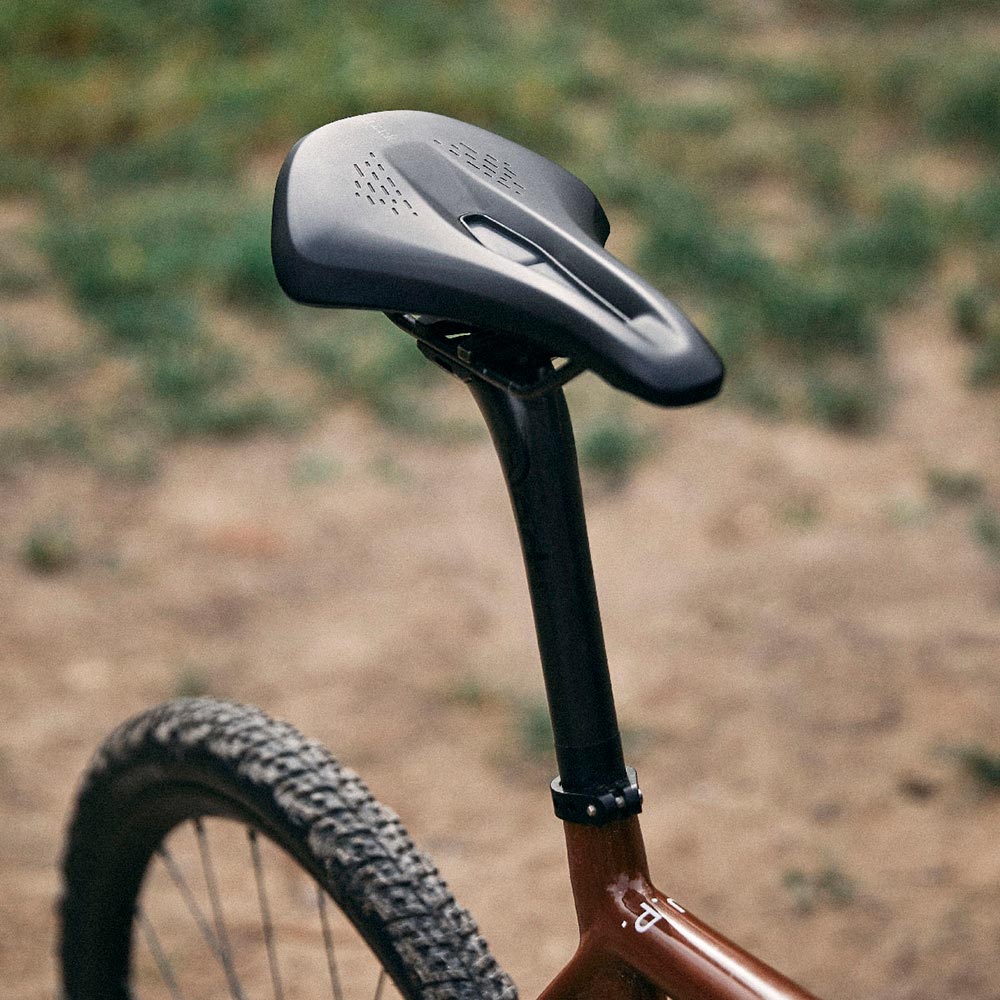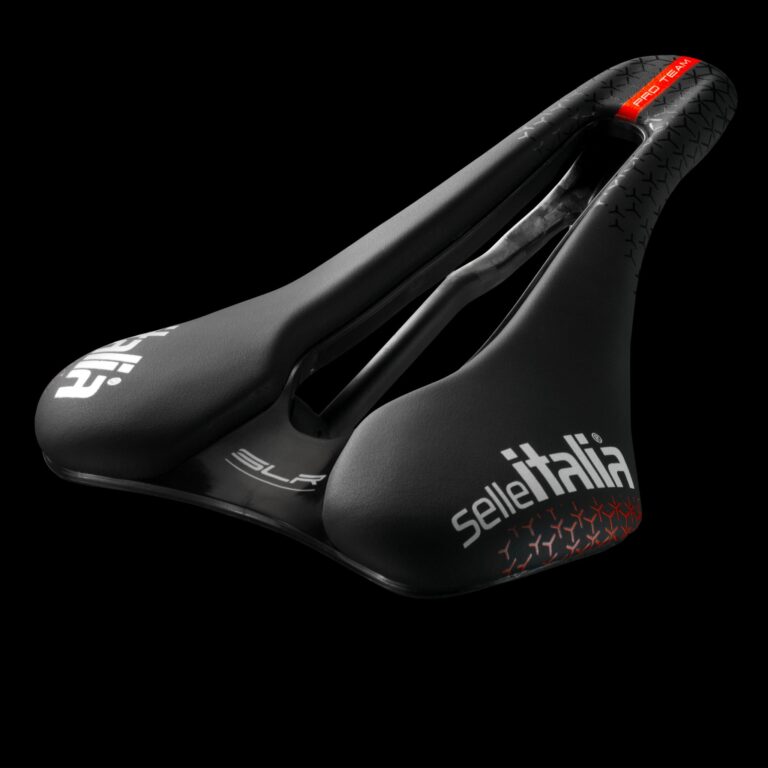A Cyclist’s Guide to Comparing Different Rail Materials in Road Bike Saddles

Key Point Summary of Comparing Different Rail Materials in Road Bike Saddles:
- Rail Materials Matter: Different materials used in road bike saddle rails, such as titanium, alloy, carbon, and steel, affect the saddle’s weight, flexibility, and comfort.
- Titanium: Offers a great balance between strength, weight, and flexibility, leading to improved comfort and performance. Ideal for riders looking for a lightweight option without sacrificing durability.
- Alloy: Generally refers to aluminum alloys, which are heavier than titanium but offer durability and cost-effectiveness. Suitable for beginners or those on a budget.
- Weight and Comfort: The choice of material can significantly impact the saddle’s overall weight and comfort, with lighter materials often providing a more comfortable ride due to better vibration absorption.
- Cost: There’s a noticeable price range across different materials, with carbon and titanium being pricier options, while steel and alloy are more budget-friendly.
As a masters cyclist who’s spent countless hours racing and riding across various disciplines, including mountain biking, gravel grinding, cyclocross, and of course, road cycling, I’ve had my fair share of saddle sores, comfort challenges, and the never-ending quest for the perfect saddle. Through it all, one aspect that’s repeatedly proven to be crucial in finding that perfect perch is the material of the saddle rails. The choice between titanium, alloy, carbon, and steel rails might seem minor at first glance, but it significantly impacts weight, flexibility, vibration absorption, and ultimately, your comfort and performance on the bike.
Titanium Rails: The Lightweight Champion
Let me start with titanium, a material that strikes a fine balance between lightweight and strength. Early in my cycling journey, I swapped out a stock alloy-railed saddle for one with titanium rails. The difference was night and day. Not only did I shave some weight off my bike, but the slight flexibility of titanium also improved shock absorption on longer rides. This was particularly noticeable when transitioning from smooth asphalt to rough, chip-sealed roads. Titanium has this unique ability to offer comfort without compromising performance, making it a favorite among riders who are serious about both.

Alloy Rails: The Workhorse
Now, when we talk about alloy rails, we’re generally referring to aluminum alloys. These were what my first few saddles came equipped with. Alloy rails are the workhorses of saddle rails; they’re durable, reliable, and, most importantly, affordable. Sure, they’re a bit heavier than their titanium or carbon counterparts, but they offer unparalleled value. I remember one of my first road bikes came with an alloy-railed saddle that survived crashes, rain, and the rough handling of travel. For beginners or those not looking to break the bank, alloy rails are an excellent choice.
The Impact of Material on Weight and Comfort
The difference in materials isn’t just about bragging rights at the coffee shop post-ride; it directly impacts your riding experience. Lighter materials like titanium and carbon can make your bike feel more responsive and easier to maneuver, which is essential during a long climb or when accelerating out of a corner. The added comfort from the vibration-damping properties of these materials can also be a game-changer on longer rides. There’s a reason why my gravel bike and cyclocross bike both feature saddles with titanium rails—it’s all about finding that sweet spot of comfort and performance, no matter the terrain.
Cost Considerations
It’s impossible to talk about saddle rail materials without discussing cost. Titanium and carbon saddles often come with a higher price tag, reflecting their superior weight and comfort benefits. However, investing in a saddle with these materials can be worth every penny, especially if it means fewer discomforts and better performance. That being said, during my early days of cycling, sticking to alloy-railed saddles allowed me to allocate my budget to other areas of my bike that needed more immediate upgrades.

Concluding Thoughts
Choosing the right saddle, and specifically the right rail material, is a critical decision that can affect your comfort, performance, and enjoyment on the bike. Whether you’re a beginner cyclist, a seasoned racer, or somewhere in between, understanding the nuances between titanium, alloy, carbon, and steel rails can help guide your choice. While personal preference and budget play significant roles, don’t underestimate the impact of rail material on your riding experience. From my years of cycling across different disciplines, I’ve learned that sometimes, the smallest changes can make the biggest difference.
I can highlight a few models that have garnered high praise across different categories, reflecting my experiences and common preferences within the cycling community:
For Comfort and Light Weight: Titanium Rails
- Selle Italia SLR Kit Carbonio: This saddle combines a lightweight carbon shell with titanium rails, offering an exceptional balance of comfort and minimal weight. It’s a top choice for riders who value long-distance comfort without adding unnecessary grams to their bike.
For Durability and Budget: Alloy Rails
- Specialized Romin Evo Comp Gel: With its alloy rails, this saddle is a bit heavier but provides excellent durability and comfort at a more accessible price point. The addition of gel inserts helps with vibration damping, making it a solid choice for endurance riders.
For Ultimate Performance: Carbon Rails
- Fizik Antares R1: The Antares R1 features carbon braided rails and a carbon-reinforced nylon shell, making it incredibly light and stiff. This saddle is designed for riders who prioritize performance and are willing to invest in high-end materials to gain every possible advantage.
For All-Around Reliability: Steel Rails
- Brooks England Cambium C17: Though not as light as carbon or titanium options, the Cambium C17 offers unparalleled durability and comfort thanks to its natural rubber base and cotton cover. Its steel rails contribute to its robustness, making it an excellent choice for touring, gravel, or daily commuting.
It’s essential to remember that the best saddle is subjective and varies from rider to rider. Factors such as your body geometry, preferred riding position, and the type of cycling you do most will significantly influence your ideal saddle choice. If possible, test-riding a few models or taking advantage of saddle demo programs from local bike shops can be invaluable in finding your perfect match.

FAQ
Does saddle rail material matter?
Yes, saddle rail material matters as it affects the weight, flexibility, durability, and comfort of the saddle.
What is the best material for a bike saddle?
There isn’t a single best material for a bike saddle as it depends on personal preferences and priorities; however, titanium and carbon are popular for their lightweight and comfort properties.
Are all saddle rails the same?
No, all saddle rails are not the same. They vary in material (e.g., steel, alloy, titanium, carbon), shape, and diameter, which can influence compatibility with seatpost clamps and overall riding experience.
What are the different types of road bike saddles?
Different types of road bike saddles include:
- Performance saddles: Designed for racing, with a narrow shape and minimal padding to save weight and allow for a more aggressive riding position.
- Endurance saddles: Offer more cushioning and a wider base to support a more upright position, suitable for long-distance rides.
- Women-specific saddles: Tailored to accommodate the anatomical differences in pelvic width and shape between genders.
- Cut-out and relief channel saddles: Feature a cut-out or groove down the middle to reduce pressure on sensitive areas. Each type caters to different riding styles and comfort needs.
Happy Riding!
John






